This is my personal account of what it was like to climb and successfully summit the tallest peak in Africa, Mt. Kilimanjaro. If you haven’t read Part I, it covers my arrival in Tanzania and the first half of the Kilimanjaro experience.
Without further ado, here is Part II, including the infamous summit day!
Day 5: My Favorite Day
I’ll be real, when I woke up the morning of the fifth day, I didn’t feel great. Day five marked the longest number of consecutive days I’d ever slept in a tent and gone without a shower up to that point. The previous night had been colder than expected, and I hadn’t done the best job of keeping myself warm.
I was cold. A cardinal sin on the mountain. The rules are to stay dry, clean, warm and nourished. I also had a slight headache – my first time waking up with one. Luckily, this was the last I’d experience on the trip until the end of summit day.
I took a few – possibly several – moments to feel sorry for myself and try to remember why I thought this was a good way to spend my vacation. Eventually, I gathered myself, reminded myself that I was here for a challenge, and got going.
Honestly, once I washed my face, I felt much better. Sometimes that really is all you need.
After my overly dramatic early morning pity party, I wouldn’t have guessed that day five would end up being one of my favorite days of the trek.
Day five was the day we’d conquer the Baranco Wall. From our campsite, we had a decent view of the wall, and it was definitely an intimidating specimen.
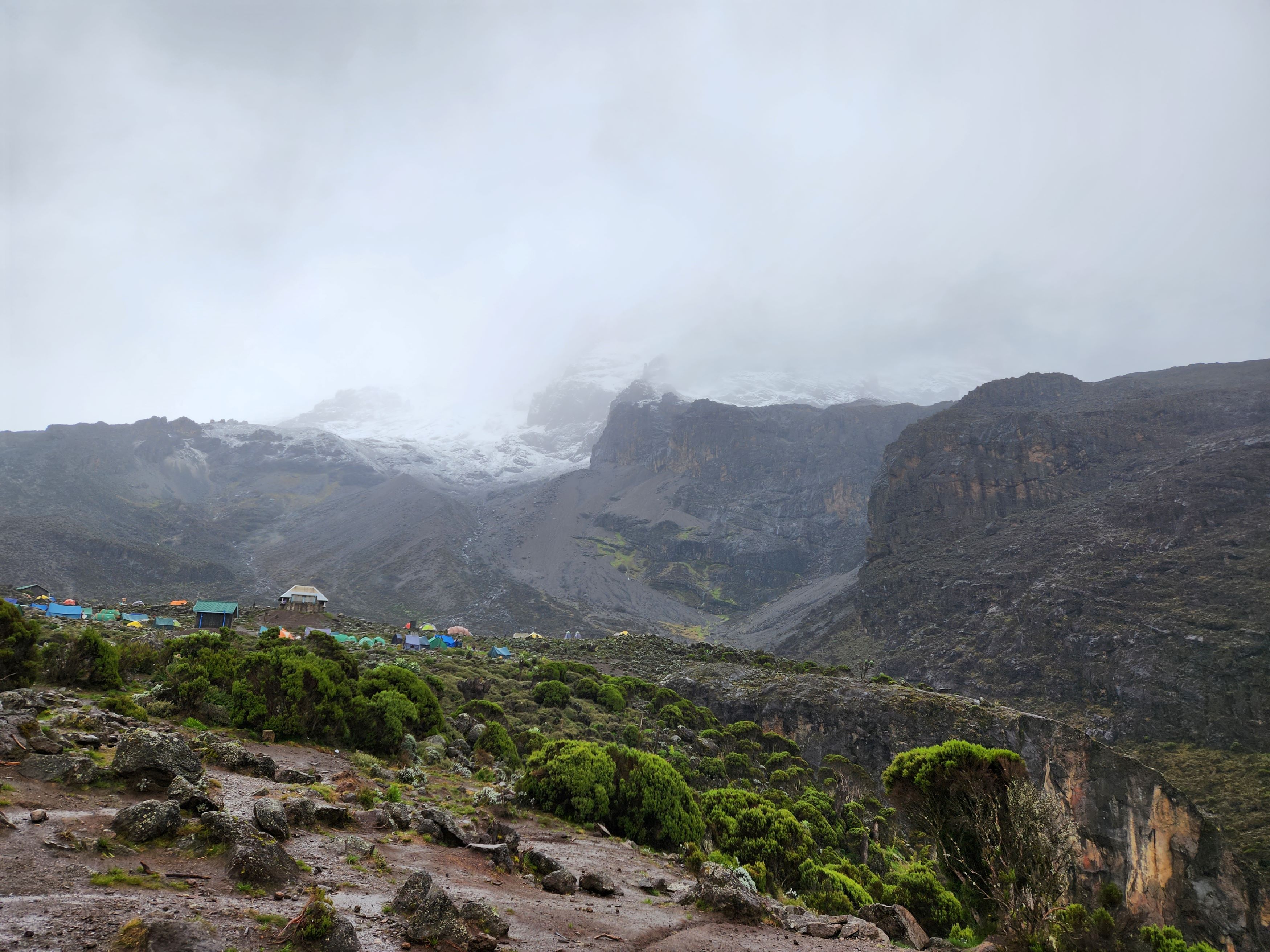
We spent the first part of our hike this day walking across rivers and creeks and talking about the upcoming scrambling. Our guides Deo and Adam warned us in advance that there were certain areas on the Baranco Wall where no one could pass because it was too precarious.
After about an hour of buildup, we finally reached the wall.
We spent some time getting up the wall, using our upper body to scramble in the necessary section. It was nice to have more of a full-body workout after putting the majority of stress on our lower body for the past four days.
There was one section where everyone kisses the wall for good luck. Although I’m usually skeptical about kissing things where many others have placed their lips, I figured I needed all the luck I could get. Yep, I planted a big, fat kiss on that rock as I carefully made my way around it.
Because there were not many other groups climbing with us, we took several breaks to admire the view below and appreciate how far we’d climbed. We were especially glad we took the time to do this when we reached the top of the Baranco Wall only to find we were completely surrounded by clouds and had absolutely no views.
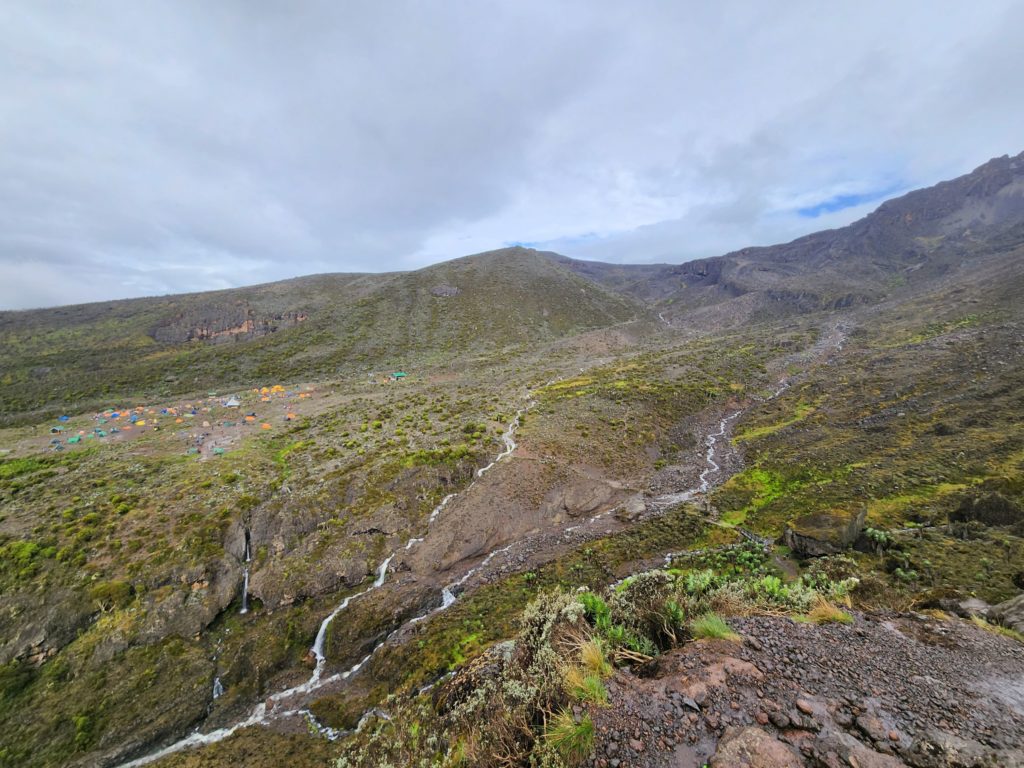
If there’s anything I’ve learned from hiking, it’s that you have to appreciate the views when you get them because nothing is guaranteed.
After a quick snack and water break, plus gander at the non-existent view, it was time to climb down the Baranco Wall. (In my journal, I repeat how much I dread climbing down because it makes me feel like “a weak little baby child” – if you’re wondering how I really feel about it.)
Even on my sad Bambi legs, the climb down wasn’t actually too bad. It was considerably less steep than the day before. We also thankfully had good weather, so the trail was easy to traverse with beautiful natural surroundings.
Aside from summiting, climbing the Baranco Wall was my favorite Kilimanjaro experience.
The last part of the trail was a steep uphill ascent – better than climbing downhill in my opinion.
It also abutted the last water source before the Kili summit base camps, so many porters climbing up were carrying heavy water containers. And the trail made it so everyone had to walk in a straight line going pole-pole, as required.
From very far away, we might have all looked like overloaded ants on giant anthill.
It was maybe half an hour to the top of the trail. Again, our porters had chosen a quieter camp to give us a good chance to rest. It was also one of the flatter places to camp at the site, though still rather precariously perched.
Let me tell you – the experience of sitting in a camp toilet tent at a slant while experiencing what altitude does to digestion will not leave me any time soon. Now I have a greater appreciation for toilets sitting flat on even ground.
Still better than a long-drop toilet.
That night, I reveled in the fact that it was my first headache-free campsite. I hadn’t had any pain since my brief and mild headache that morning.
The camp was also just so gorgeous. There were views of Mt. Meru and the valley, as well as Kili’s peak (though the summit was still somewhat hidden in the clouds). It was especially beautiful in the sunset. I felt like I was really truly immersed in the magic of the mountain at the Karanga Camp. While I’d been logically aware of why I was taking on this challenge, I finally felt emotionally aligned for the first time since the hail storm on day three.
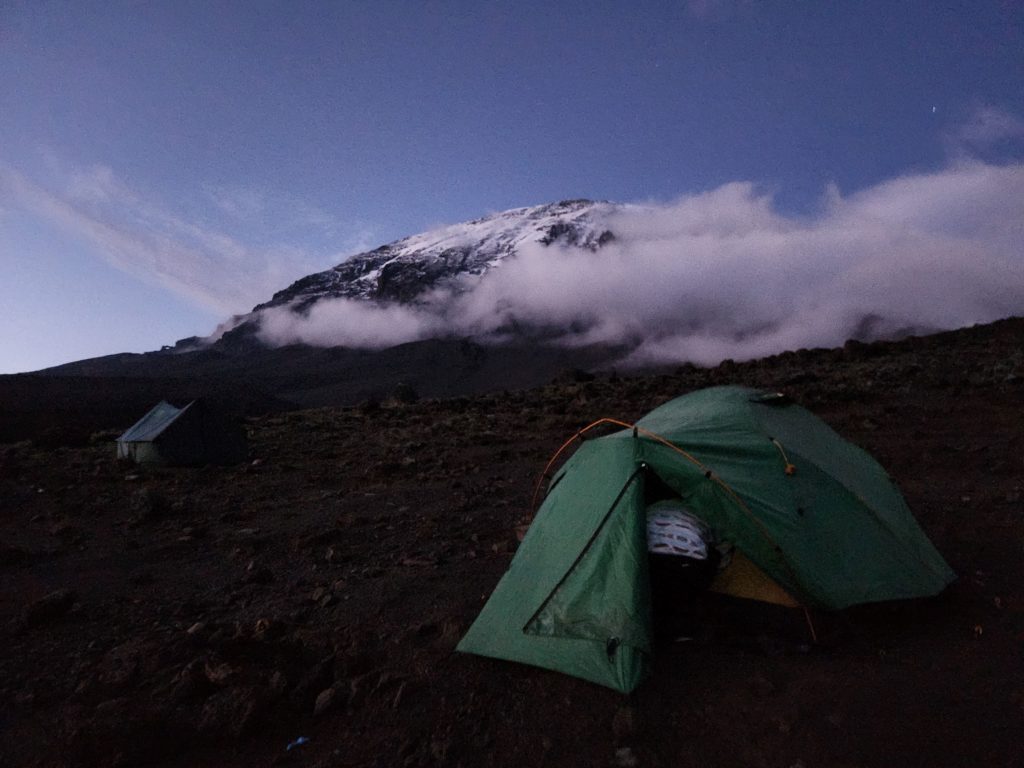
I also thankfully learned how to properly keep myself warm overnight on night five. But more on that in the packing blog.
Day 6: The Rest Day Before Summit Day
As a stark contrast to day five, I awoke on day six feeling strong, capable and excited. I’d successfully stayed warm throughout the night and slept well. The next day was summit day, and I was ready – if not a little anxious.
Day six is considered another “rest day” on the eight-day Lemosho trail. The idea is to do a short (just over two-mile) hike up to the Barafu base camp and relax in preparation for the strenuous summit day.
Deo had told us we could sleep in a bit today and leave camp around 8 a.m. or so because it would be an easy day. And it was indeed an easy day. The weather was good, albeit a little misty, with excellent views of the rocky alpine desert.
This day was entirely uphill with no downhill climbs, which was an added bonus for me.
We got to our campsite in under two hours, quicker than we expected. Our porters had set up camp on one of the flattest parts of the Barafu camp site, though it was still steep. There’s not a lot of flat area at Barafu.
The campsite had amazing views of the peak we’d be climbing in just a handful of hours.
We also had a view of the helicopter pad used to escort people with extremely bad altitude sickness down the mountain, which was mildly anxiety inducing. Apparently, they have this pad at every campsite, but it must have been well-hidden.
Because we were feeling so good, we explored camp with Adam. We climbed a few meters up to get a view of the Mawenzi Peak – a previously erupted peak on Kilimanjaro – and take a picture in front of the Barafu Camp sign.
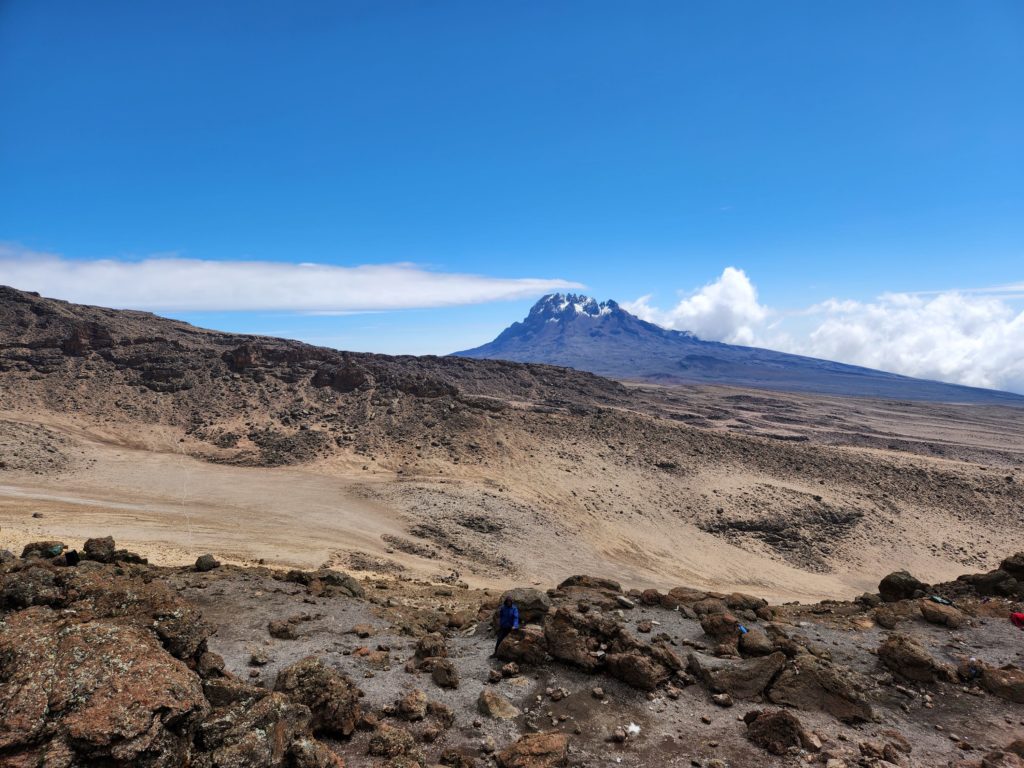
Back at camp, we dried some damp clothes in the sun while it was still shining. I also decided to bask on a rock and do some journaling about my Kilimanjaro experience, with the view of everything I’d climbed stretching out in front of me.
We ate some lunch then returned to our tent to try to nap. However, my partner was experiencing some of the bad side effects of altitude sickness for the first time. I won’t go into the gory details, but it was the first time his confidence in being able to summit was seriously shaken.
His health check showed he had a solid blood oxygen level and resting heart rate still, though, meaning the metrics showed he was in good enough health to summit if he chose. Deo, who had 16 years of climbing Kilimanjaro experience and had turned trekkers back before, reassured us that he would be sending him down the mountain if his symptoms were at all concerning or abnormal.
Luckily, he decided to summit. It wouldn’t have felt right to go without him.
Dinner was just a light soup – which I was grateful for both because the altitude was slowing my digestion, and because I honestly hadn’t hiked enough that day to work up an appetite for three large meals.
After an early dinner, we tried to sleep around 7 to prepare for an 11 p.m. wakeup call.
Unfortunately, campers were just arriving to a campsite right next to ours around this time, and they were quite loud. Their raucousness combined with some altitude-related discomfort made it nearly impossible to sleep.
I tried to find my Zen as I had the first time noisy campers kept me up. Then, I tried to turn off my brain by reciting musicals from memory. When neither of those worked, I tried turning on some music to try to drown out the noise. Around 9, I realized none of my methods were working, and we needed at least a small amount of sleep before summit day.
Again, if you can sleep with earplugs, I definitely recommend them. I cannot and also didn’t bring any.
I exited our tent and got Deo to ask if he could ask the campers to keep it down. He went and spoke with who I assumed was the campers’ lead guide to ask them to keep it down. A few minutes later, the large group of campers yelled their goodbyes to one another and were in bed just before 10.
All-in-all, I got about an hour of sleep to prepare for the 18-hour summit day.
Day 7: SUMMIT DAY
For only one hour of sleep, I felt surprisingly rested when I awoke for summit day.
It was definitely the adrenaline.
I put on all my layers, as instructed the night before. I’d come to regret this later. I also pulled socks over my water bottles, which I would not regret at all.
We officially set off for the summit just before 12:30 a.m., relying on our headlamps and the moon to light our paths. We proactively took a double dose of Diamox (altitude sickness medication) and ibuprofen to protect us from the worst effects of standing at almost 20,000 feet above sea level.
I really had a pep in my step for the first maybe four hours of summit day. After so much anticipation peppered with anxiety, I was excited the day was finally here!
We climbed past the sign and lookout point we’d walked to just 12 hours earlier – no views to be seen in the darkness. About an hour in, we passed the higher Kosovo base camp those wanting a shorter summit climb choose to use.
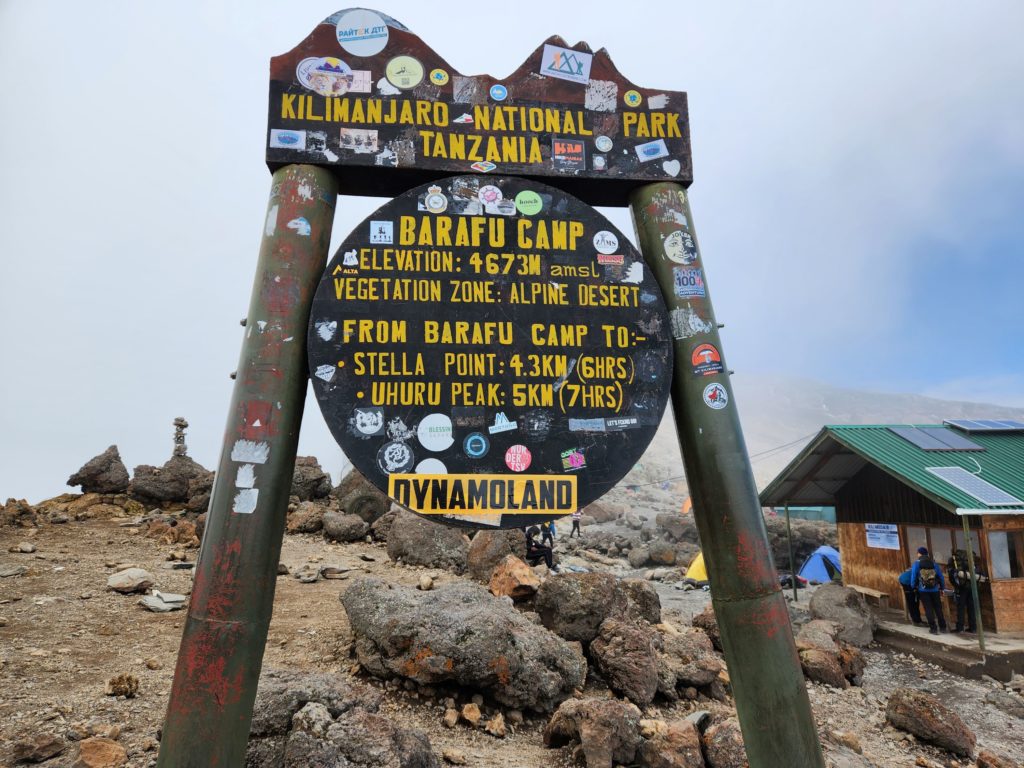
After Kosovo camp came a small bit of scrambling up large boulders. Then, the next milestone in our Kilimanjaro experience was Stella Point.
The trail from the rocks above Kosovo to Stella Point is a long, steep climb in the complete darkness. Most groups leave Barafu base camp around midnight, aiming to reach Stella Point by sunrise around 6:30 a.m.
Shortly after passing these boulders, we started seeing snow on the trail for the first time. The main reason for starting the summit attempt at midnight is so the trail is frozen and therefore easier and safer to climb. As the snow got deeper, Deo recommended putting on our crampons to more easily tackle the snowy/icy trail.
I was still in a relatively chipper mood, but began fading slowly. Then, Deo began saying we were “close” to the top.
“How close?” I questioned.
“Close,” Deo reassured me.
“Okay, but how close exactly?” I probed. “More than 10 minutes?”
“Yes,” he sighed, tired of this line of questioning, “more than 10 minutes.”
“Deo, how close exactly? Please. You need to tell me. I need to know.”
Maybe (probably) I sound exhausting, but I’m the type of person who needs to know how long something is going to take. I don’t do well with vague answers like “soon” or “close.” Give me the numbers.
This is how my brain works:
- If you tell me something is 10 minutes away, I think, “Great, I can do anything for 10 minutes.”
- If you tell me something is one hour away, I think, “Great, I can do anything for six, 10-minute increments.” I just need to know how many increments to count.
- If you tell me something is 10 minutes away when in reality it is one hour away, after 20 minutes, I start thinking, “Great, this is never going to end.” And I lose my will to continue.
I explained this to Deo, and he finally relented to give me the true amount of time.
“Two hours.”
Okay, longer than I was hoping. But I had made a summit playlist to help me trudge through the hardest parts of this trek. Deo recommended I start my playlist, and I gladly obliged.
With motivating music blasting my ears, I looked around the mountain.
You could see nothing but the moon and a line of headlamps trudging through the darkness above and below.
It was actually encouraging to see all the dots of light below and realize how far we’d climbed. The darkness masked the top of the trail, so you couldn’t see exactly how far you still had to go.
Maybe this was part of the reason for starting the trek at midnight.
We climbed and climbed, taking short water and rest breaks every 20 minutes or so. Sometimes, our guides broke out in Swahili songs to encourage us to keep climbing. At one point, we joined up with another larger group walking up the mountain in a line, and they joined in with us in song. It felt very communal.
When we were maybe 20 minutes from Stella Point, I began to really feel the work I’d put my muscles through over the past week. I like to think I’m generally pretty fit, but slowly climbing up a mountain for seven days in a row is harder than I realized. For one, the slower you do any exercise, the more you are toning your muscles. I could feel what seemed like every inch of my glutes, quads and hamstrings screaming at me as we finished our slow, relentless, steep uphill climb.
I thought we were already walking pretty slowly. But then near the top, we were behind a large group climbing at what felt to me like an excruciatingly slow pace. Their pace was seriously making me question my ability to summit, despite being able to make out the faint outline of the Stella Point sign in the very early sunrise.
I asked Deo if we could pass the group.
“Are you sure?” He asked, his eyes filled with skepticism and concern.
“I am,” I reassured him.
He confirmed with my partner as well, who also said he wanted to pass. Deo nodded, and with his long legs marched past the group at a pace faster than I initially expected. I followed despite a mild concern my heart might explode (just kidding, mostly). Once we passed the group, I took half a second to catch my breath then triumphantly marched to the Stella Point sign.
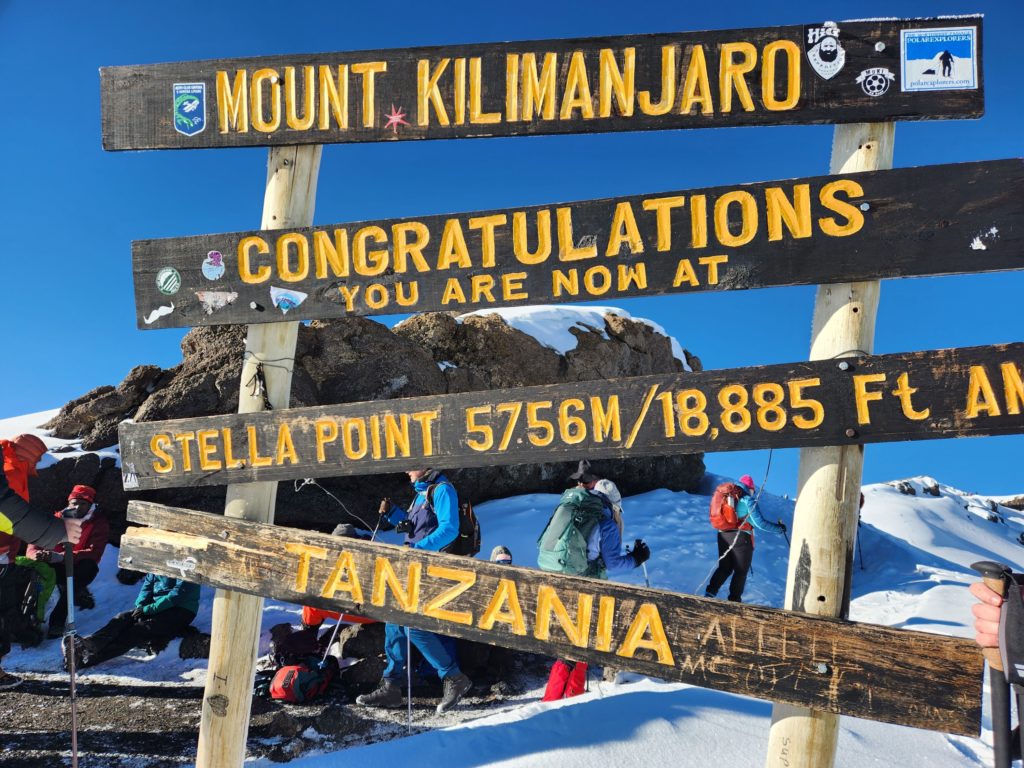
As I stood at the sign declaring we were over 18,000 feet above sea level and watching an incredible sunrise over Mount Kilimanjaro, I couldn’t believe what I’d just done. This was the Kilimanjaro experience I’d hoped to have.
I felt so accomplished in this moment. I was relieved I’d made it to this point, and endlessly grateful that my body had gotten me so far. Deo encouraged me to eat a snack, and so I had the most well-earned Snickers of my entire life.
After our short snack break at Stella Point, we still had about an hour of trekking to the actual summit.
Luckily, this part of the trek consisted of walking along the crater rim at only a slight gradual incline. However gradual, it was still an incline at altitude, meaning my muscles were still very much screaming at me.
Adam encouraged us to appreciate the sunrise as we hiked to the peak, which sort of helped distract me. It really was incredible to watch the dawn break over the glittery, snowy mountain. And the fact that we’d worked so hard just to appreciate this moment made it all the better. He also told us his previous group of trekkers were in clouds at the top and so didn’t get this view, which made me more grateful for this moment.
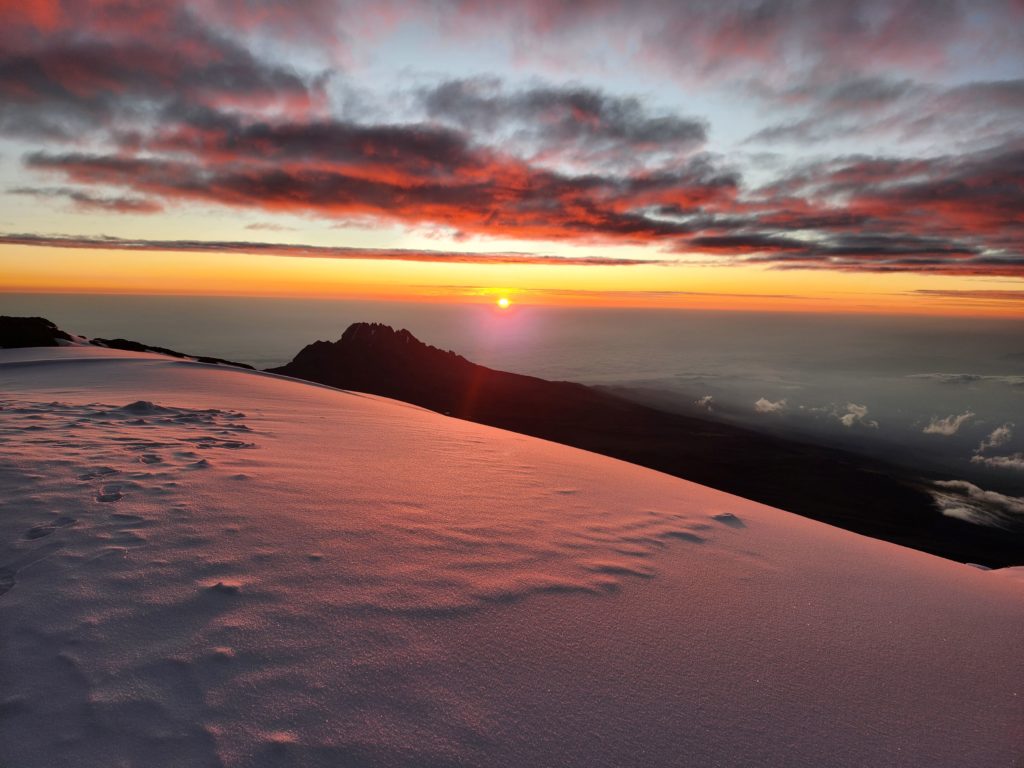
Finally, we reached Uhuru Peak, which was honestly a little underwhelming. There was a short line of people waiting for photos in front of the sign. People were in a weird mood, angling to get to the front of the line and taking as many photos as possible once there. When it was finally our turn to take a photo, we felt like we needed to rush through them so others could get their turn because the group right before us took an exceptionally long time for their photo shoot.
Reaching Stella Point felt nearly more rewarding than Uhuru Peak. The relief in finishing the steepest part of the climb and payoff of the views of dawn breaking over the mountain just cannot be beaten. But of course you have to go to the real summit once you’ve come that far.
I did get to throw a snowball at my partner at Uhuru Peak. Absolutely worth it.
After photos, our guides urged us to quickly turn around and start going downhill as fast as possible.
Once we reached Stella Point, at which point the trail got substantially steeper, Adam took my arm and told me to lean on him while he helped me downhill. See, the number one priority is for our guides to get us down the mountain safely, and there is always a danger of being at that high of altitude. Therefore, there is not too much time to enjoy your accomplishment as you must go downhill quickly.
As I’d previously proven myself bad at climbing downhill, they thought it best to assist me in climbing down. However, my problem is not in my physical ability, but in my mental block of being able to quickly climb downhill, and I haven’t yet found assistance that can help with that. I really do love hiking and still hold out hope that one day, something will just click in my brain and help me get over this mental barrier/fear.
However, that was not this day.
Luckily, they realized I was not having any issues with the altitude and soon let me climb downhill at my own pace. It definitely took longer than everyone wanted, myself included. All I wanted was to get base camp where our campsite was still set up ready for us to take a short nap as soon as we arrived.
About an hour before reaching our campsite, most of our porters met us with some mango juice and cups. We toasted our summit success and continued climbing down.
At camp, we had about 40 minutes to rest before leaving to climb down another 4-6 hours to our final campsite – the lower camp.
The reality of what still lay ahead really set in when we woke from our short nap.
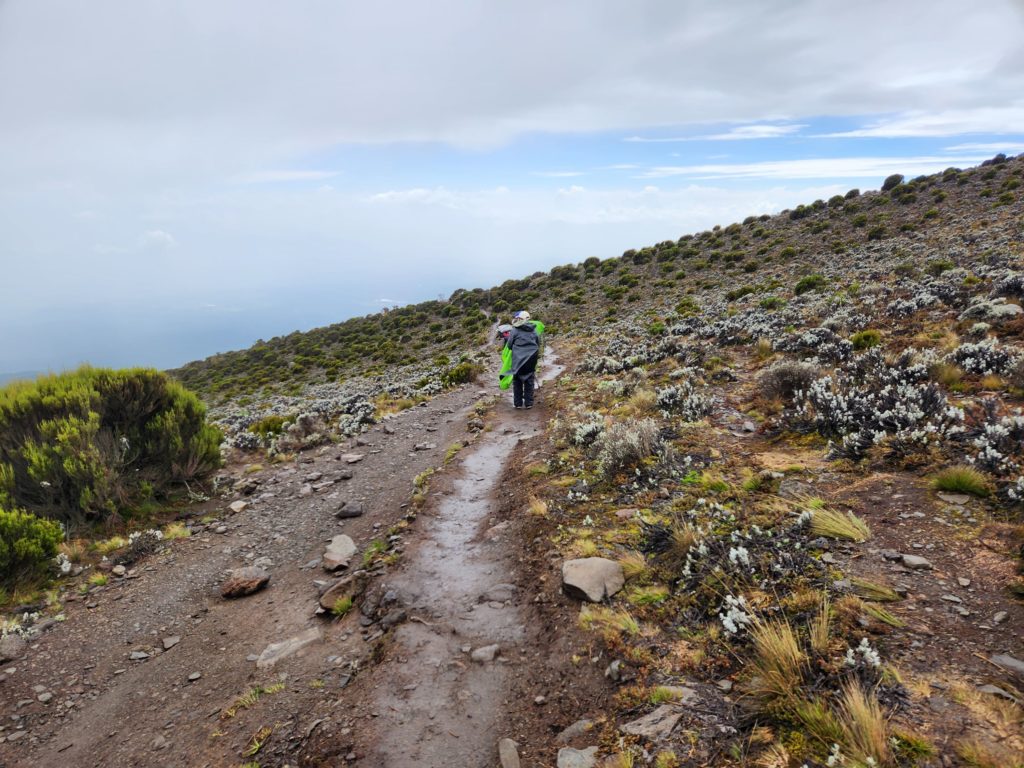
We had already put in so much work to reach the summit, but still had so much farther to go before we could really rest. I ate some Clif energy blocks, which promised to provide two hours of energy.
Once the Clif blocks kicked in, I actually did have a lot of energy. We walked at a fair clip down the mountain for the first two hours.
I should have re-upped the Clif blocks at this point. Once they wore off, the climb down became much harder. The trail was uneven, somewhat steep and a little muddy. As much as I tried, I couldn’t bring myself to move any faster. All I wanted to do was sleep.
At one point, we witnessed a woman struggling with an asthma attack being carried down the trail. Shortly after she passed, a random trekker came up behind us on the trail and approached me asking if I was the girl with asthma he’d heard about up trail.
That’s right – I was walking so slowly that a stranger assumed I was having an asthma attack.
I started thinking about how little sleep I’d had and how long it would be until I could sleep again. Big mistake. I felt very down from this point forward and couldn’t shake myself out of it. When we were still about half an hour from camp, our porters met us again to relieve us of our packs. One of the porters noticed how down I felt and gave me a much-needed hug that was so comforting, it nearly solved all my problems.
When we got to camp, dinner was ready. I’d asked if we could eat as quickly as possible so we could get to sleep.
A few minutes after dinner was served, everyone approached our tent to officially congratulate us on a successful summit and celebrate the Kilimanjaro experience.
They surprised us with a freshly baked cake, some non-alcoholic sparkling grape juice, beaded necklaces and woven bracelets with our names and the flags from the US and Tanzania.
After thanking everyone, I asked if they all wanted cake, and they enthusiastically said yes. I cut the cake into enough pieces for our full crew. Then, everyone lined up, and I put a piece of cake into each of their hands and thanked them. It felt very ceremonial.
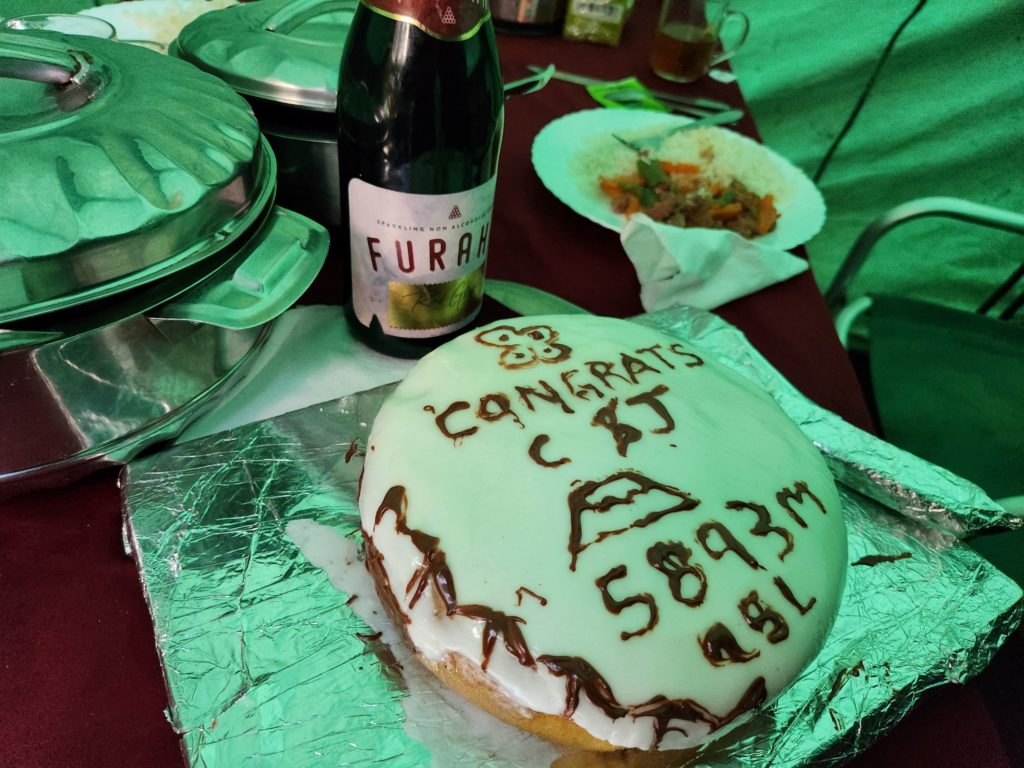
Before turning in for the night, Deo gave us the tip sheet to fill out in the morning. I also gave him the extra snacks we hadn’t eaten to distribute in camp.
Then, it was finally time to crawl into my sleeping bag and enjoy the best sleep of my entire life.
Day 8: The Last Day
After nearly 10 hours of much-needed sleep, I awoke feeling rested and very grateful it was my last morning inside a tent for the foreseeable future. I nibbled at breakfast, but honestly I wasn’t very hungry after working so hard to stuff myself over the previous seven days in order to maintain the energy to make it up the mountain. I was actually so relieved that I no longer felt like I needed to over-eat.
After breakfast came the tipping ceremony. It’s important to share the intended tips with everyone in our crew so they know what they’re getting for transparency. I read out the tip intended for each person in the crew, and after each one, everyone clapped. Once the final tip was read out, we all sang and danced together.
Finally, it was time to finish our Kilimanjaro experience. As we descended through the mountain forest again, the heat and humidity really encroached upon us. After spending so many days being cold, I cannot describe how happy I was to finally be warm. My cheeks flushed so much as I rapidly descended into the humidity that I looked sunburned (I wasn’t).
About halfway down the final trail, we got a final glimpse of the Kilimanjaro peak. The shy mountain came out of the clouds to bid us adieu before finishing our trek.
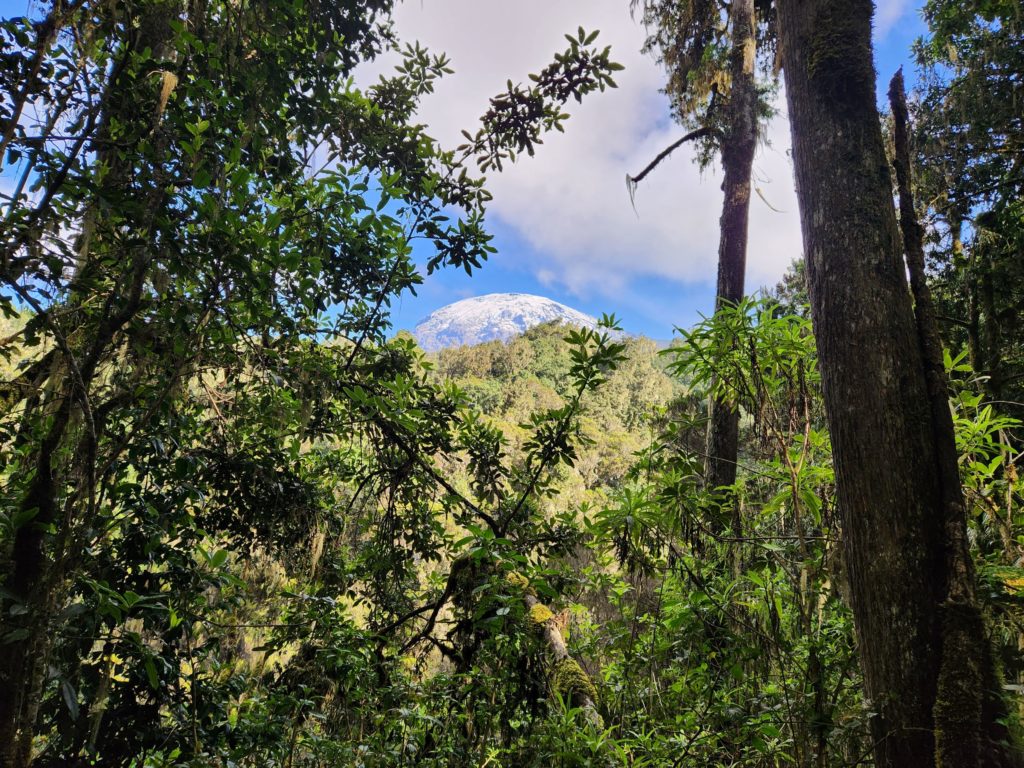
After climbing down a few more muddy paths that were thankfully less steep than the day before, we finally got to the fire road. At one point, we did see someone being carried down on a stretcher, which made me feel grateful I was able to use my own two legs to get me down the mountain.
Before getting to the final gate, a couple more friends wishing farewell.
We spotted both the colobus and blue monkeys. Again! And the colobus had babies!
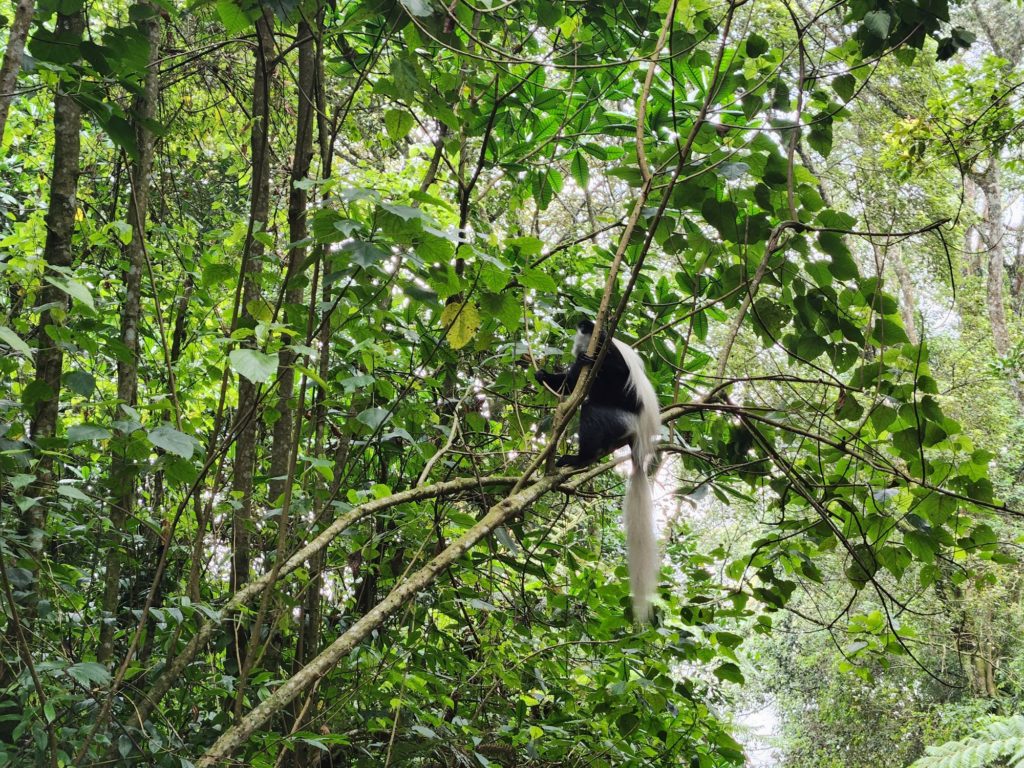
Then, our Kilimanjaro experience was done. We spent about 15 minutes waiting for our certificates, then piled back into the van. We enjoyed some lunch and a beer with Deo before returning to the office.
Back at the Gladys office, we returned our rented clothes, then had one more surprise. There was one final ceremony where Deo and Adam gave us our official certificates for climbing Mt. Kilimanjaro and medals.
Back at the hotel, I took the best and possibly longest hot shower of my life. It didn’t even wash all the dirt and grime away. Luckily, we were spending the next few days at the beach, with the saltwater to finish washing out the dirt. Nature’s ultimate cleanser.
Closing Thoughts on my Kilimanjaro Experience
I knew Mt. Kilimanjaro would be physically challenging, but I didn’t quite expect the mental challenges that would arise as well. I still feel so much appreciation for my body and mind for getting me safely up and down the mountain. It is truly an accomplishment and major bucket list item, and I’m so grateful I got to have this experience.
Any questions about the Kilimanjaro experience? Ask below or shoot me a message.
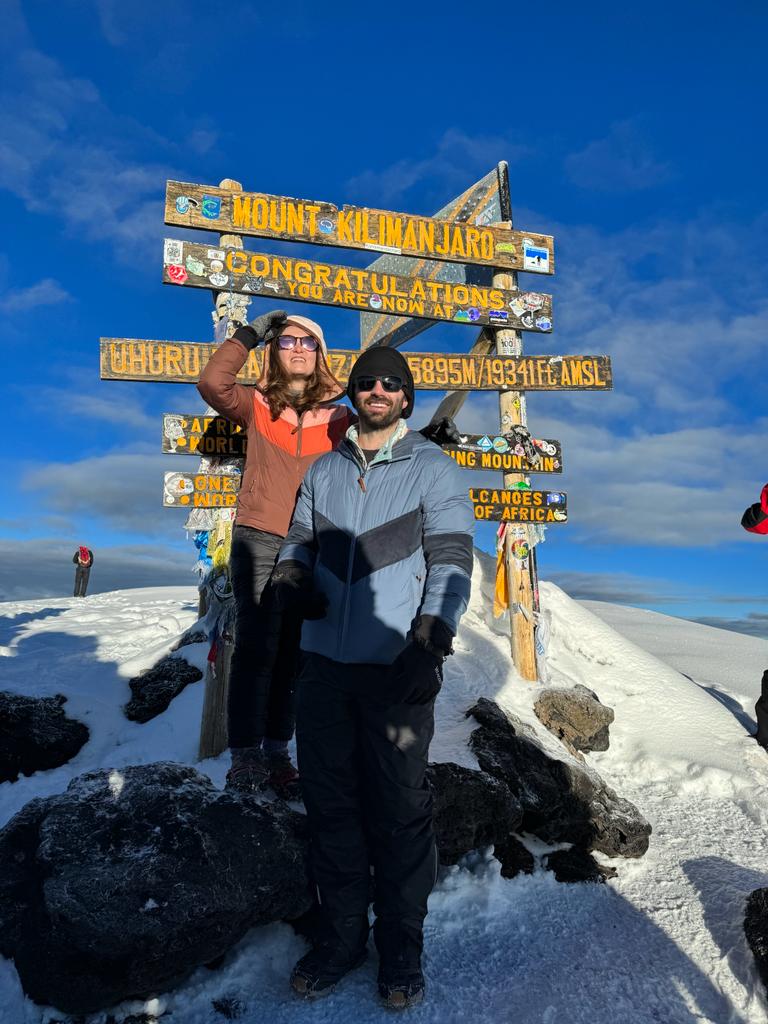

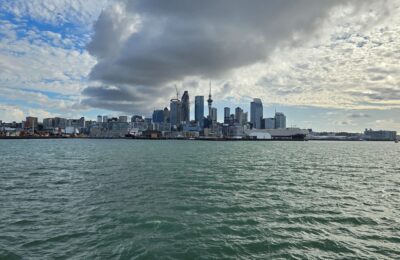
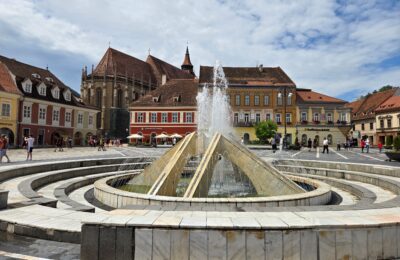
2 thoughts on “What is the Real Kilimanjaro Experience? Days 5-8”